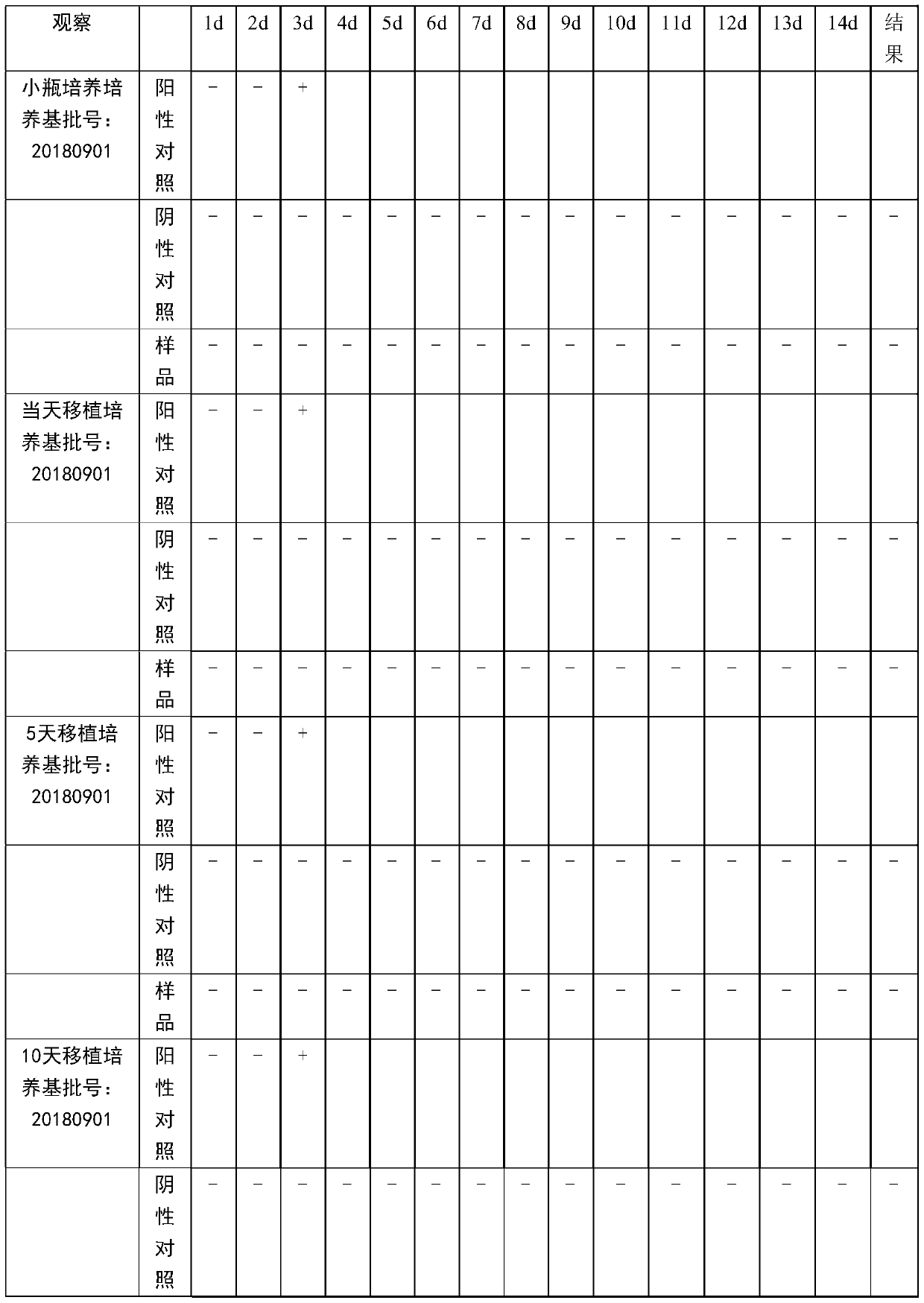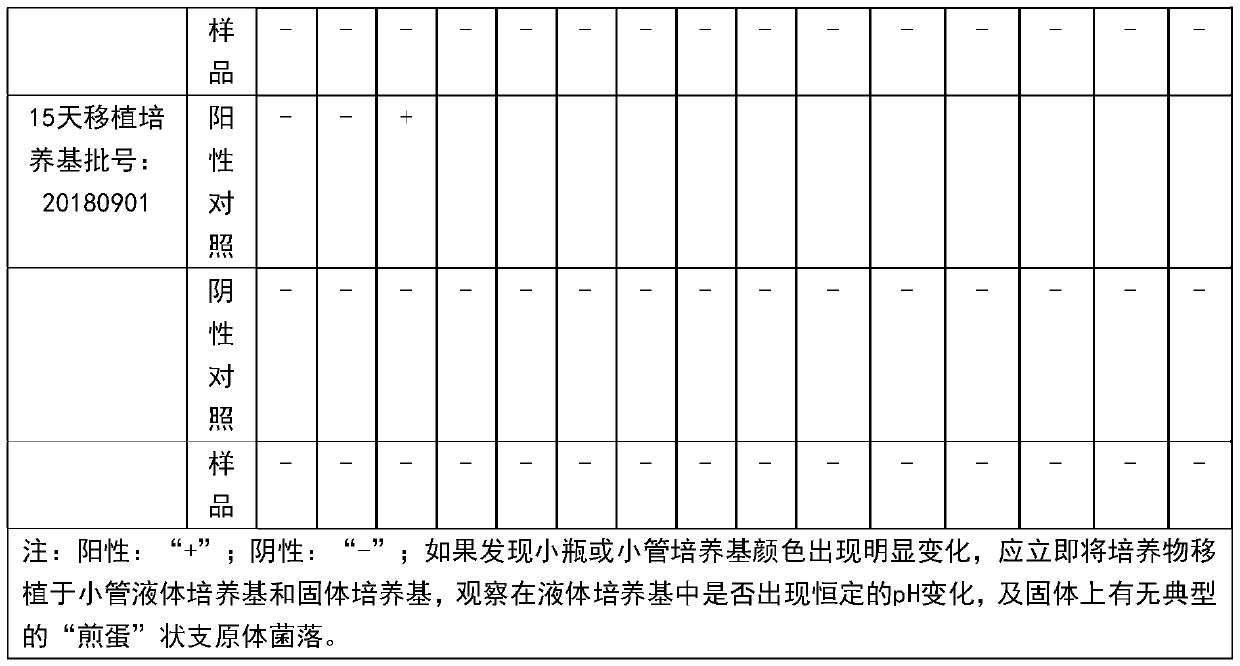Porcine senecavirus nucleic acid standard substance and application thereof
A virus nucleic acid and standard technology, applied in the field of swine Seneca virus nucleic acid standard, can solve the problems of lack of standard materials, uncalibrated, unclear source background, etc., to improve the quality and safety detection ability, stability and uniformity Good performance and guarantee the effect of smooth development
- Summary
- Abstract
- Description
- Claims
- Application Information
AI Technical Summary
Problems solved by technology
Method used
Image
Examples
Embodiment 1
[0036] The acquisition of the high porcine Seneca virus strain of embodiment 1 virus content
[0037] 1. Source of virus seed The virus seed used in the manufacture of this product is Seneca Valley virus SVV-HeNXX / swine / 2017 strain [because Seneca valley virus (Senecavalley virus, SVV) is also known as Seneca virus A (Senecavirus A, SVA ), so SVV and SVA all refer to the same virus in this application]; the virus species used for efficacy testing is the S-SVV strain, which is separated, identified, kept and supplied by the Henan Animal Disease Prevention and Control Center.
[0038] 2. Cell preparation Take out the frozen BHK21 cells from the working cell bank, thaw them in a 37°C water bath, centrifuge at 1000r / min for 15 minutes, discard the supernatant, resuspend with serum-free full suspension medium, and inoculate the bioreactor , set the temperature at 37° C., pH value 7.2, dissolved oxygen 50%, stirring speed at 100 r / min, perfusion speed at 60 r / min, and culture for 24...
Embodiment 2
[0043] The preparation of embodiment 2 porcine seneca virus nucleic acid standards
[0044] 1. Preparation of virus liquid
[0045] 1.1 Cell preparation Take out the frozen BHK21 cells from the working cell bank, thaw them in a water bath at 37°C, centrifuge at 1000r / min for 15 minutes, discard the supernatant, resuspend them with serum-free full suspension medium, and inoculate them into a bioreactor , set the temperature to 37° C., pH value to 7.2, dissolved oxygen to 50%, stirring speed to 100 r / min, perfusion speed to 60 r / min, and culture for 24 hours to 72 hours. The overgrown BHK21 cells were digested with trypsin and passaged at a concentration of 2×10 5 Viablecells / mL, placed in a 5% CO2 incubator for static culture.
[0046] 1.2 Virus cultivation and harvesting BHK21 cells that have grown into a good monolayer in the bioreactor, add the production seed virus SVA YRQ / 2016 with the preservation number CCTCC NO:V202013 at a ratio of 1% (V / V), and reset the temperature...
Embodiment 3
[0051] The inspection of embodiment 3 porcine seneca virus nucleic acid standards
[0052] The porcine seneca virus nucleic acid standard substance that embodiment 2 makes carries out following inspection:
[0053] 1. Physical property test
[0054] SVA standard substance should be colorless and transparent liquid.
[0055] 2. Virus inactivation test
[0056] Get 1mL of the standard solution prepared in Example 2 and inoculate it into the monolayer host cells. After culturing, no viral lesions appear. Quantitatively identified by PCR, the amount of virus after cultivation does not increase. Continuous blind passage for 3 generations shows no viral lesions. If there is no amplification curve identified by qPCR, the virus can be considered to be inactivated.
[0057] 3. Mycoplasma test
[0058] After dissolving the SVA standard substance, use the mycoplasma mycoplasma culture method to detect whether there is mycoplasma pollution. The test results are recorded in Table 1, a...
PUM
 Login to View More
Login to View More Abstract
Description
Claims
Application Information
 Login to View More
Login to View More - R&D
- Intellectual Property
- Life Sciences
- Materials
- Tech Scout
- Unparalleled Data Quality
- Higher Quality Content
- 60% Fewer Hallucinations
Browse by: Latest US Patents, China's latest patents, Technical Efficacy Thesaurus, Application Domain, Technology Topic, Popular Technical Reports.
© 2025 PatSnap. All rights reserved.Legal|Privacy policy|Modern Slavery Act Transparency Statement|Sitemap|About US| Contact US: help@patsnap.com



